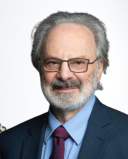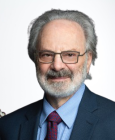Free Will
Consciousness, Free Will, and the Mind
The universe is not only stranger than we think, but stranger than we can think.
Posted June 5, 2022 Reviewed by Jessica Schrader
Key points
- General anesthesia does not shut down the brain globally and does not always produce a complete absence of consciousness.
- Our current understanding of matter alone is unlikely to explain the nature of mind.
- All animals have the neuroanatomical, neurochemical, and neurophysiological substrates of conscious states.

The modern scientific worldview is predominantly grounded in classical Newtonian physics. It considers matter the only reality. This scientific view is referred to as materialism. A related assumption is the notion that complex things can be understood by reducing them to the interactions of their parts—usually smaller, simpler, or more fundamental bits such as atoms and electrons. This is called reductionism. Materialism and reductionism are science’s Tweedledee and Tweedledum.
Based on classical science, it would be reasonable for the reader to conclude that our genetic endowment combined with epigenetic changes in response to environmental challenges has produced the mind, consciousness, the choices we make, and even our beliefs, likes, and dislikes. Biological phenomena, such as electrical charges, neurotransmitters, and hormones, are considered responsible for and fully explain these processes.
Many neurologists, philosophers, and psychologists are of the opinion that if all of the myriad factors that contributed to the construction of our bodies (including the brain) were known, we could precisely predict how a person would act in any situation at any time. In other words, we have been programmed like a computer. The mind arises from the operations of the brain. Free will is an illusion.
Similarly, using the language of neurons and cortical excitation, these scientists hold that the brain generates consciousness. Scientists armed with ever more precise fMRIs, EEGs, and the other tools of the materialist and determinist position have mapped our brains successfully and located areas responsible for sight, hearing, executive functions, and much more. They have been very successful in identifying the brain’s neural circuitry, electrical conduction along axons, or chemical diffusion across synapses. But the terra firma of materialism becomes far less firm and far shakier when neuroscientists attempt to understand with the devices and approaches of classical science the more profound mystery of the mind. Will, reason, or the mind do not currently have any precisely identified neural correlates. How can the firing of billions of neurons give rise to thoughts, imagination, art, or appreciation of beauty or complex feelings like love, hate, or happiness? How does a 3-pound organ with the consistency of jello create feelings of awe or empathy?
Scientists are not even close to discovering how the brain creates conscious experience. Somehow, brain processes acquire a subjective aspect, which at present seem impenetrable to classical science. Enter post-materialism science and quantum biology.
Consciousness
Since the beginning of time, men and women have tried to come to grips with the three fundamental mysteries of life: consciousness, free will, and God, without much success. Are these “hard” problems, as philosopher David Chalmers characterized consciousness, or are they truly insoluble “mysterian” problems, as philosopher Owen Flanagan called them?
Consciousness is generally understood to mean that an individual not only has an idea, recollection, or perception but also knows that he or she has it. This knowledge accords individuals a sense of self and agency. It encompasses both the experience of the outer world (“it’s sunny”) and one’s inner world (“I’m happy”).
Most biologists believe that in the process of evolution, consciousness arose when cortical neurons in living organisms reached an inflection point denoting a certain degree of complexity. This theory implies that consciousness emerged, just like life itself, from inanimate matter. Therefore, old-school neuroscientists have ascribed to the brain a singular and dominant importance, a fact that has for a long time discouraged research into differences between brain and mind, as well as the origins of consciousness and free will.
The presently accepted view among neuroscientists is that consciousness occurs after the fact, as an epiphenomenon (the same epi as in epigenetics), a function of the brain. Actually, Pierre Jean Georges Cabanis (1757-1808), a French physiologist, stated this position already 200 years ago as, "The brain secretes thought like the liver secretes bile." However, it was not until 1991 that mainstream cognitive science and philosophy fully adopted American philosopher Dan Dennett’s term epiphenomenalism.
In the past, consciousness was thought to reside in the prefrontal cortex. More recently, the prefrontal cortex is seen as regulating levels of consciousness by way of reciprocal interactions with subcortical arousal systems as well as neural circuits of attention, working memory, and verbal and motor processes.
Some authors, based on lesion data, electrical or magnetic stimulation data, and functional brain imaging data, argue that both content-specific and full neural correlates of consciousness are mainly located in the posterior part of the brain, encompassing the parietal, occipital, and lateral temporal lobes.
In 1992, Sir John Carew Eccles, an Australian neurophysiologist and philosopher who won the 1963 Nobel Prize in Physiology and Medicine for his work on the synapse, proposed that consciousness likely occurs in dendrites. Two decades later, Karl Pribram, the eminent brain scientist, psychologist, and philosopher, called by his colleagues the “Magellan of the Mind” added his support to this theory. Obviously, this is a work in progress.
A prominent international group of neuroscientists, neuropharmacologists, and computational neuroscientists gathered at the University of Cambridge in 2012 to reassess the neurobiological substrates of conscious experience and related behaviors in human and non-human animals. At the conclusion of their meeting, they published The Cambridge Declaration on Consciousness, according to which “the absence of a neocortex does not appear to preclude an organism from experiencing affective states. Convergent evidence indicates that non-human animals including all mammals and birds, and many other creatures, including octopuses, have the neuroanatomical, neurochemical, and neurophysiological substrates of conscious states along with the capacity to exhibit intentional behaviors.”
In this context, it is not surprising that anesthetists as a group stand out from other scientists and philosophers as having contributed much pioneering research on consciousness. When people are administered an anesthetic, they seem to lose consciousness or at least stop reacting to their environment. Anesthetic agents do not suppress brain function globally but exert dose-dependent effects on specific brain systems that block the perception of pain.
The question central to consciousness under anesthesia is whether consciousness is fully lost during anesthesia or does it persist but in an altered state? A joint research project of the University of Turku, Finland, has explored in-depth this question. Their studies revealed that the brain processes sounds and words even though the subject does not recall it afterward. The findings indicate that the state of consciousness induced by anesthetics is similar to natural sleep. While sleeping, people dream and the brain observes the occurrences and stimuli in the environment subconsciously. Under anesthesia as in sleep, we can be of two minds. Classical neuroscience is unable to provide an explanation of this phenomenon.
References
Chalmers, David (1995). Facing Up to the Problem of Consciousness. Journal of Consciousness Studies. 2 (3): 200–219.
Flanagan, Owen, The Science of the Mind (1991) 2ed MIT Press, Cambridge
Dennett, D.C. (1991) Consciousness Explained, Boston, MA: Little, Brown.
Pal, D., Dean, J. G., and Hudetz, A. G., et al., (2018). Differential role of prefrontal and parietal cortices in controlling level of consciousness. Curr. Biol. 28, 2145.e5–2152.e5.
Eccles, J. C. (1992). Evolution of consciousness. Proceedings of the National Academy of Sciences. 897320–7324
The Cambridge Declaration on Consciousness:
http://worldanimal.net/images/stories/documents/Cambridge-Declaration-o…




